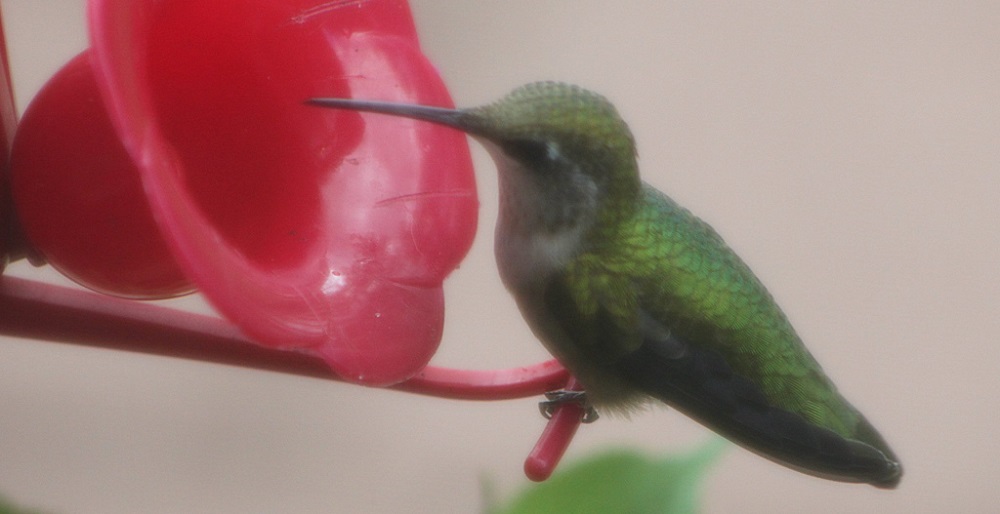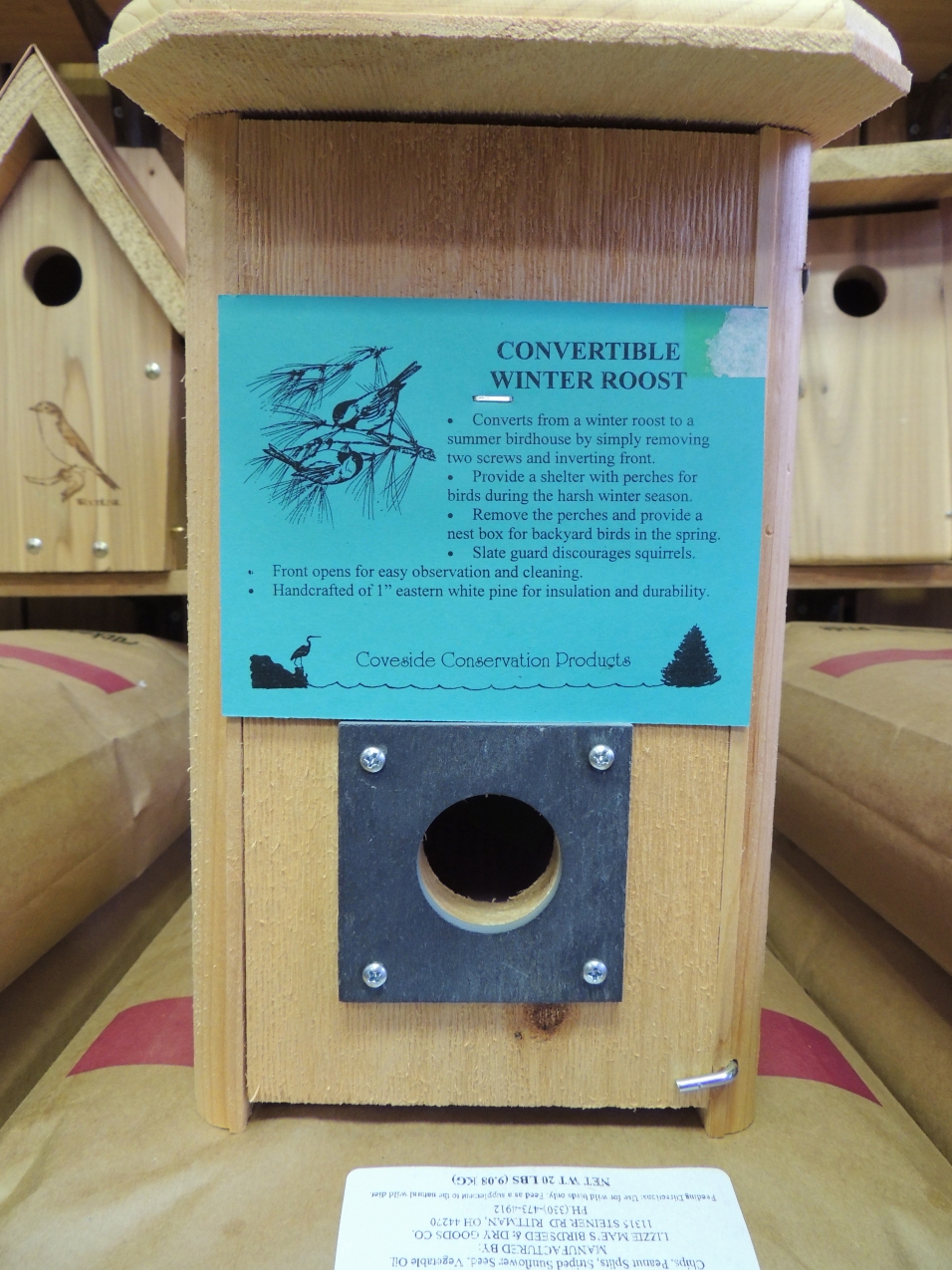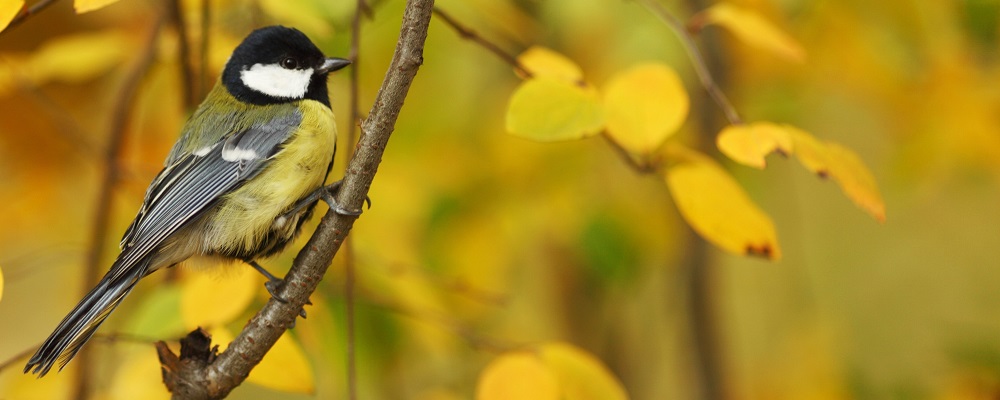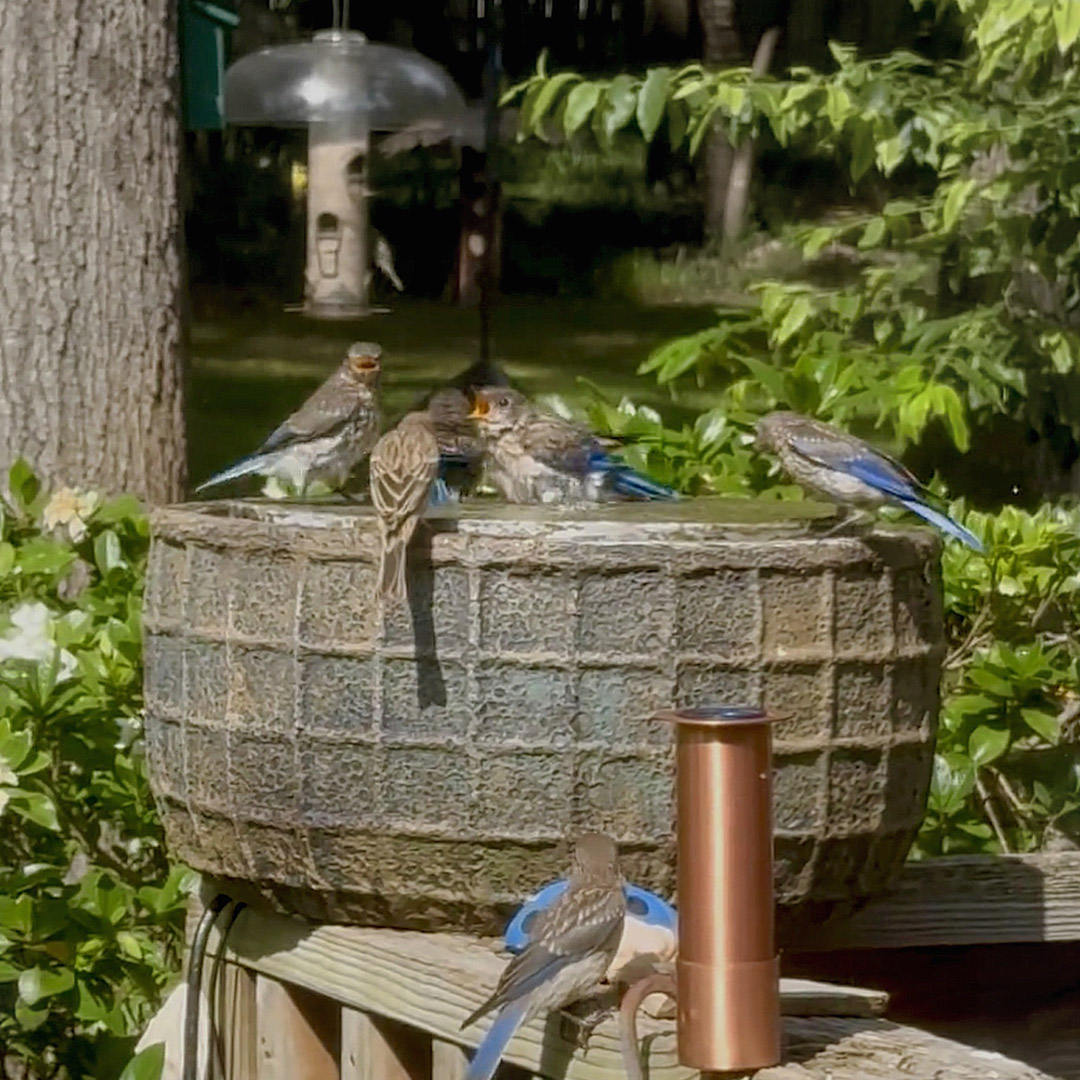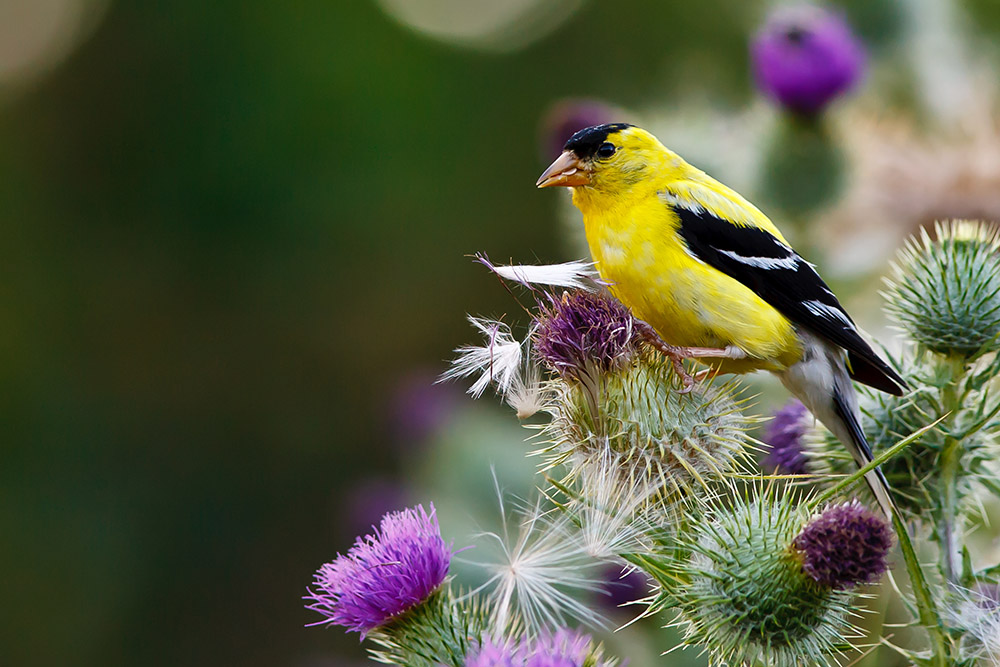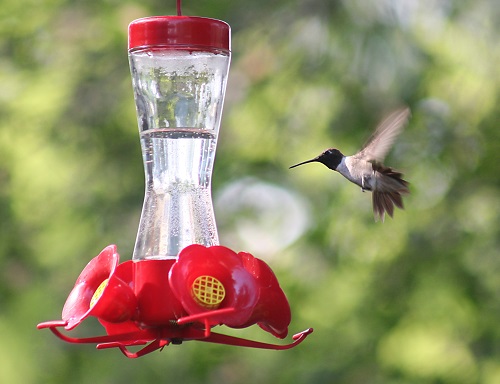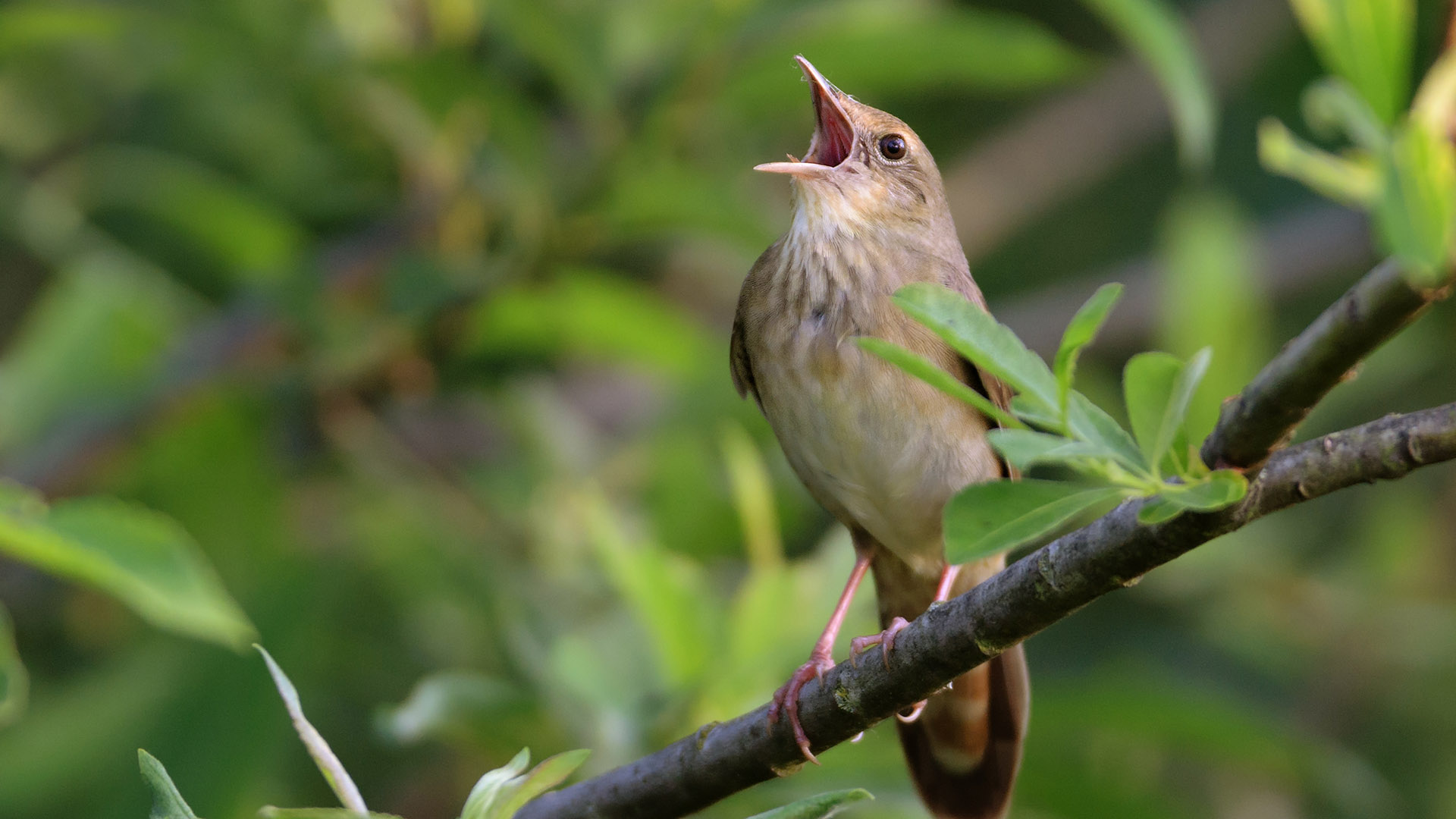Ruby-throated Hummingbirds are eastern North America’s only breeding hummingbird. But in terms of area, this species occupies the largest breeding range of any North American hummingbird.
They begin to appear in North Carolina during the warmer season with sightings as early as mid-March. While spending the cooler months in Central America, Ruby-Throated Hummingbirds return to the eastern half of the U.S. and southern Canada each year by flying a 500 mile journey across the Gulf of Mexico in one flight.
Characteristics of the Ruby-Throated Hummingbird
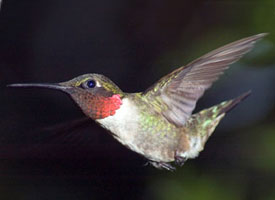 © Michael Hogan
© Michael HoganThe Ruby-throated Hummingbird is a small hummingbird with a slender, slightly down curved bill and fairly short wings that don’t reach all the way to the tail when the bird is sitting. They are bright emerald or golden-green on the back and crown, with gray-white underparts. The males are distinct from the females with a brilliant iridescent red throat that appears to be dark when it’s not in good light.
You can find these brilliant, tiny, precision-flying creatures by wandering flowering gardens or woodland edges at the height of summer, or by putting up a hummingbird feeder. Feeders and flower gardens are great ways to attract these birds, and some people turn their yards into buzzing clouds of hummingbirds each summer.
Ruby-throated Hummingbirds are very common in suburbs and towns, and they can be quite bold, by feeding at hanging plants and feeders on your porch or next to your windows.
Attract Ruby-throated Hummingbirds to Your Yard
You can attract Ruby-throated Hummingbirds to your backyard by setting up hummingbird feeders or by planting tubular flowers like trumpet creeper, cardinal flower, honeysuckle, jewelweed, bee-balm, red buckeye and red morning glory. They prefer to feed on red and orange flowers. Like many birds, hummingbirds have excellent color vision and can see into the ultraviolet spectrum, which humans cannot see.
If you do not have these types of flowers in your yard, garden or patio, you can still attract hummingbirds using colorful hummingbird feeders filled with nectar. Nectar is a mixture of one part table sugar and four parts bottled water. Or, for a more simple solution and to save time, you can purchase Hummingbird Nectar from Backyard Birds – price ranges $2.95-$4.95 depending on size of container.
Suggested Placement for your Hummingbird Feeder by Perky Pet®
Spring 2017 Migration of Ruby-throated Hummingbirds by eBird
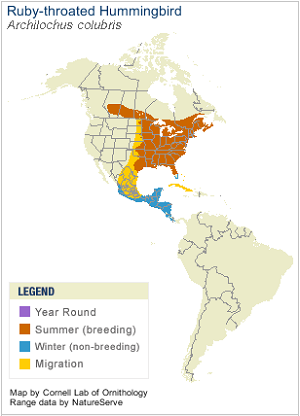 A real-time, online checklist program, eBird has revolutionized the way that the birding community reports and accesses information about birds. Launched in 2002 by the Cornell Lab of Ornithology and National Audubon Society, eBird provides rich data sources for basic information on bird abundance and distribution at a variety of spatial and temporal scales.
A real-time, online checklist program, eBird has revolutionized the way that the birding community reports and accesses information about birds. Launched in 2002 by the Cornell Lab of Ornithology and National Audubon Society, eBird provides rich data sources for basic information on bird abundance and distribution at a variety of spatial and temporal scales.
The first migrating ruby-throated hummingbirds have already arrived in Gulf Coast states and making their way to the Carolinas. Throughout the spring season, wind speed and direction will affect migrating hummingbirds.
Keep an eye on the tracker to find the most recent up-to-date sightings.
Join our Backyard Community
Backyard Birds e-newsletter is chock full of the latest Backyard Birds news, special offers, promotions, and in-store events happening right here as well as related events in our area. Join our Backyard Community and get connected today! It takes less than a minute of your time to fill out. Plus, as a way of saying thank you for subscribing, we’ll email you a $5 off coupon to use on your next $35 or more purchase.

